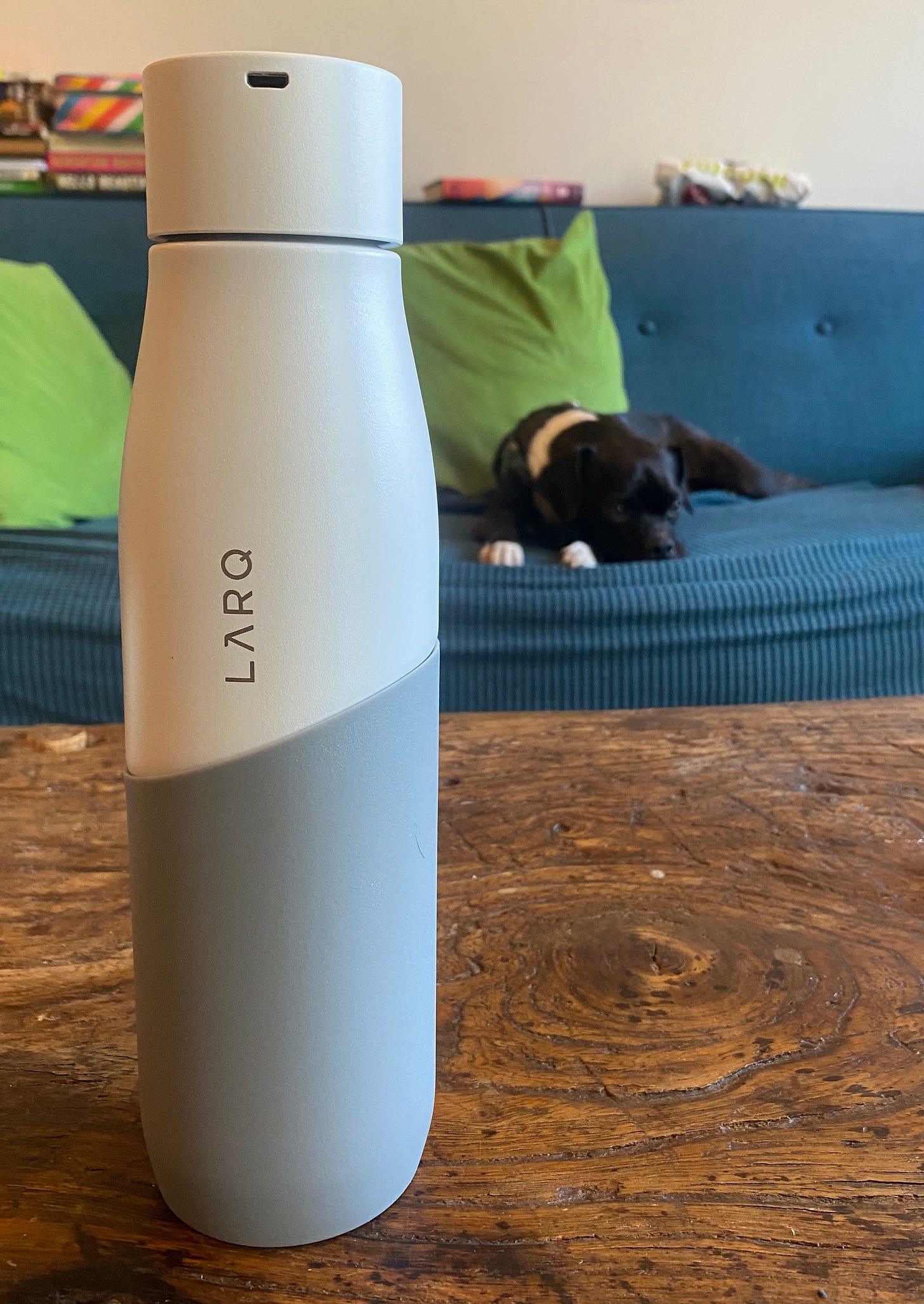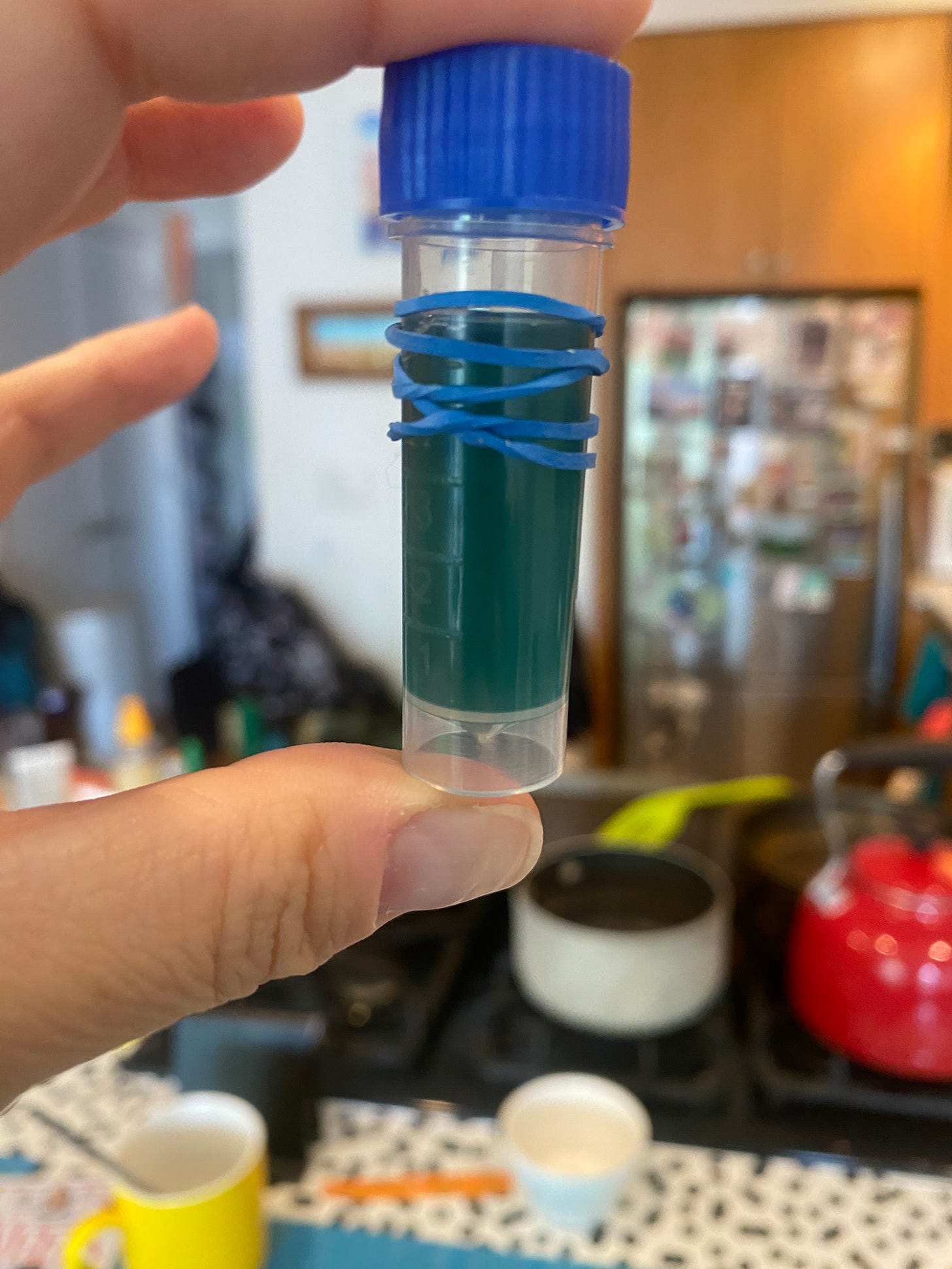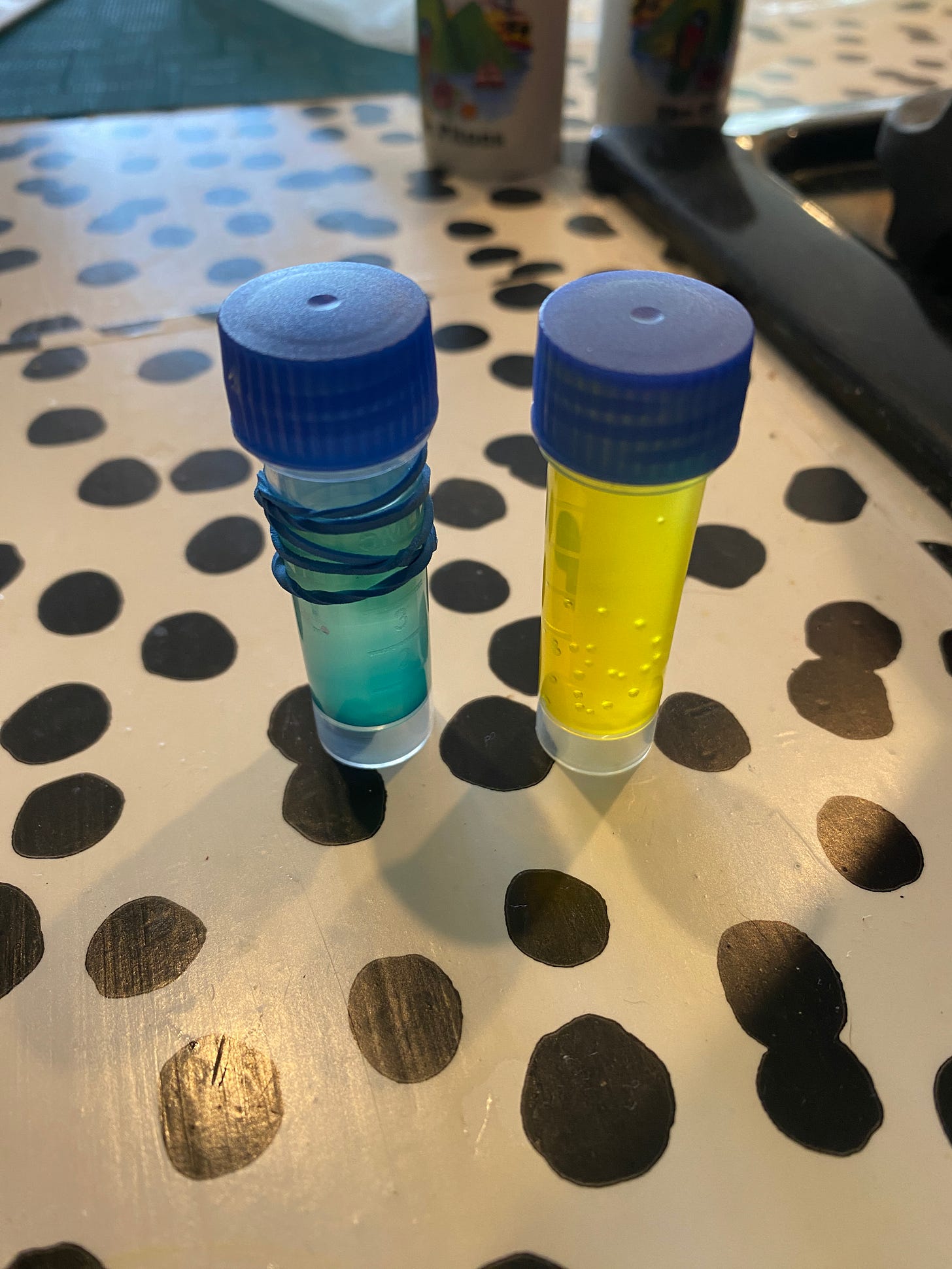E.coli and Me
Take that, Marley.
So it turns out one coping strategy I have for life when life gets unwieldy is to focus on a project and then obsess over that project until it’s done. Usually these projects have to do with gear—finding the perfect X for Y problem, and usually the problem isn’t really a problem so much as an adventure. Like: I wanted to go on the adventure called Motherhood so I went deep on getting pregnant via IVF (so much research! which doctor to use, what donor, what drugs do *I* think I should be taking, etc.). Or: I am going to Peru where the tap water isn’t safe, so I need a solution—the perfect solution—when of course I know bottled water is readily available everywhere. Note: traveling to Peru and Motherhood are *totally* equivalent…
Enter lots of research on filtering water bottles and which performs best across a series of measures that range from functionality to, say, hand feel.
Does any of this sound bananas to you? Just you wait.
I settled on the Larq water bottle, which costs a whopping $99 and isn’t even insulated. What it does come with, however, is a cap that zaps your water with a UV light, claiming to kill E.coli bacteria, among others.
A water-zapping bottle cap—now *that* is my kind of gear. Especially one that looks good with my dog.
Now, I’ve always wanted to live lightly—not to be a consumer of useless stuff that ends up in the landfill—and yet here I am. Not proud, but not ashamed enough to stop buying useless stuff. After all, the Larq isn’t useless. It’s just unnecessary. This seems like an important distinction when trying to justify my questionable choices.
So I bought the Larq, obsession over.
But here’s the thing: in this our age of misinformation, doubt, and ensuing vulnerability to conspiracy theory, I got to wondering if the Larq actually works. I read the reviews. But what if the reviews were fake? I watched YouTube videos of ostensibly real people swearing by the Larq. But enter the word “ostensibly.”
My daughter is almost ten and already subject to an alarming measure of skepticism about what she hears. She doesn’t “trust” the Lincoln Tunnel—suspects it’s on the verge of collapse. She has her doubts about the food grade letters on restaurant windows. How long before she begins to doubt the safety of vaccines or whether President Biden is actually alive or just a hologram?
I’m not actually kidding.
And yet I understand where she’s coming from. It’s impossible to tell what’s real anymore and even medical advice has been compromised for years. Remember ProPublica’s industry-shaking expose of just how many doctors take money (and how much) from big pharma and then prescribe big pharma? The numbers are staggering. It’s no wonder people are starting to doubt everything they hear and why it’s getting very hard to dismiss them.
Don’t get me wrong, I believe in science. What I struggle with lately are the messengers.
Which brings me back to the Larq. How could I find out if it really works? I know! I could buy my own E.coli kit and test the thing myself.
What follows is a step-by-step guide for anyone who, uh, finds themselves wanting to walk this same path.
Step 1. Buy an E.coli testing kit off Amazon. Try not to drive yourself crazy with questions like: which kit is best? And: how do I know the kit works?? Cue the infinity mirror.
Step 2. Find a source of E.coli. I live in New York City, how hard could this be? I went to Prospect Park in Brooklyn, to the dog beach, which is a fancy name for a small pit of water full of nasty business. I took my sample, came home, and tested. Forty-eight hours later: no E.coli. I can’t understand how this water could be free of E.coli. My faith in the test was shaken.
Step 3. Ask your community of earnest Park Slopers where you can find E.coli, but pretend it’s for a science project with your daughter, thus triggering parental advice (a Park Slope specialty) without having to reveal that you are, in fact, bananas (thus avoiding a whole lot of judgment, which seems to be everyone’s specialty).
Step 4. Sift through all the advice—so much advice!—then realize you are not willing to take most of it. Like: I’m not traveling for E.coli.
Step 5. Decide that if you want to find E.coli, you gotta call the folks who specialize in testing E.coli. So I got on the phone with this guy who works for a water testing company. We quickly became texting buddies. He cheered me on. Built up my confidence. E.coli is everywhere! But no: he would not give me any of his E.coli water.
Step 6. Go back to Prospect Park with renewed determination. It was raining hard but the return window for the Larq was closing. I had to find E.coli! I went to the lake (I read a study that sampled water from 5 parts of the lake and all came up positive!), found an especially stagnant, gross part, muscled my way through weeds and tall grass in flip-flops—this seems like a salient detail, though I can’t say why—and scooped up what looked like some nasty poop water.
Step 7. Buy another test kit because you were not forward thinking enough to purchase in bulk.
Step 8. Test and wait.
Ta-da! Positive for E.coli. Phew.
Step 9. Run the same poop water through the Larq and see what happens. If the water stays yellow, it’s clean. Are you ready?
Ta-da! E.coli free. The Larq works. The End.
But not really. My daughter performed this experiment with me, but she’s still not convinced. Is the yellow totally yellow? Isn’t there some hint of green in there? As for me, I’m wondering how the cap cleans itself—isn’t there E.coli still on the cap?
Which brings me to the following: is this kind of pursuit actual respite from the anxiety of life situations unrelated to my water bottle?
I guess my answer is still: Yes. Why? Because these pursuits are fun and ridiculous in ways that taxes, health insurance, and financial upside just aren’t.
So there you have it, friends. On the off chance you ever find yourself wondering: what is Fiona up to these days, consider your imaginations stoked.
PS. There are affiliate marketing links in this substack because I am experimenting with the 21st Century.




